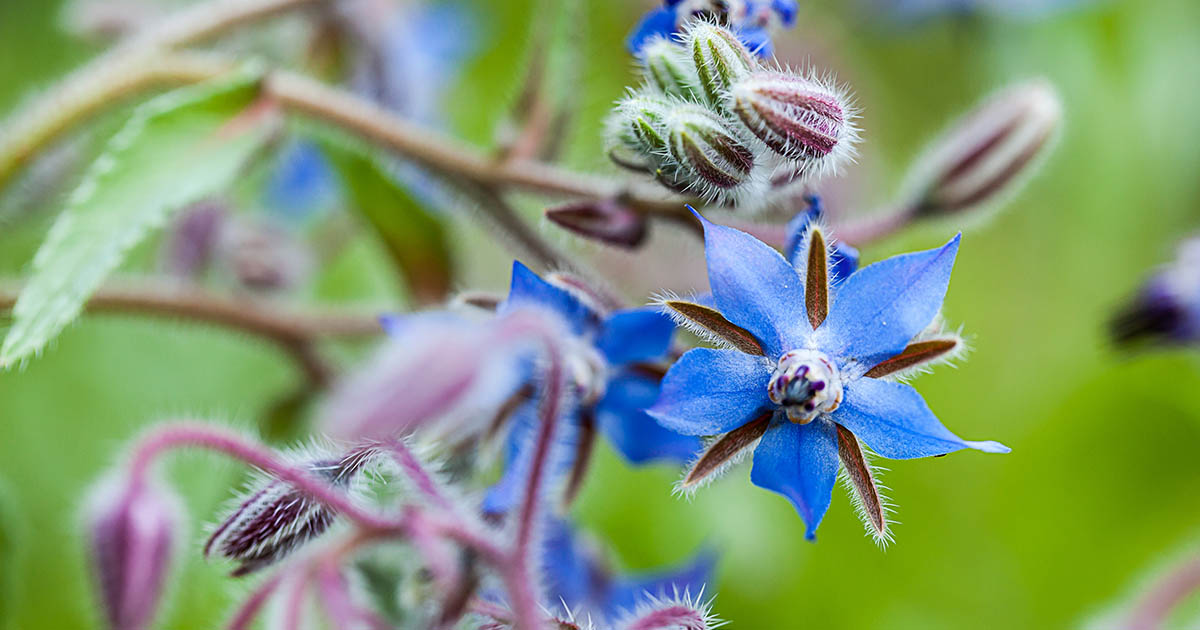
Starflower is a fascinating plant that captivates the imagination with its unique beauty and mysterious nature. With its delicate, star-shaped flowers and enchanting fragrance, it has become a favorite among gardeners and nature enthusiasts alike. But there is more to starflower than meets the eye.
In this article, we will explore eight enigmatic facts about starflower that will shed light on its intriguing characteristics and significance. From its origin and symbolism to its cultivation and medicinal properties, we will delve into the mystique surrounding this captivating plant. So, if you’re ready to embark on a journey through the enchanting world of starflower, buckle up and prepare to be amazed!
Key Takeaways:
- Starflower, also known as Trientalis europaea, is a mystical wildflower with celestial origins, symbolizing unity and resilience, and offering healing properties in traditional herbal remedies.
- In folklore, Starflower is believed to possess magical qualities, offering guidance to lost travelers and serving as a haven for hidden creatures in its forest habitat.
The Mystical Origins of Starflower
Legend has it that Starflower, also known as Trientalis europaea, was once believed to have fallen from the heavens as a gift from the celestial realms. This enchanting wildflower captivates with its delicate white petals and a mesmerizing yellow center, resembling a radiant star on Earth.
A Symbol of Unity
Starflower is often associated with unity and connectivity. Its petals, which appear to be separate, are actually connected at the base, forming a subtle bond. This unique characteristic serves as a beautiful reminder that even in apparent separation, there is always an invisible thread that unites us all.
Hidden in the Shadows
One of the most intriguing aspects of Starflower is its preference for shade and woodland environments. Unlike many flowers that thrive in direct sunlight, Starflower thrives in the mysterious allure of shadows, tucked away in the depths of forest canopies.
A Beautiful Mystery
Despite its delicate appearance, Starflower possesses a remarkable resilience. It has the ability to withstand harsh weather conditions, including frost and snow, emerging triumphant amidst the challenges of its surroundings. Truly, Starflower is a testament to the beauty and tenacity found in nature.
A Potion of Healing
Throughout history, Starflower has been revered for its medicinal properties. It was often used in traditional herbal remedies to alleviate pain, soothe inflammation, and promote overall well-being. The mysterious healing powers of Starflower continue to intrigue herbalists and natural health enthusiasts to this day.
A Guiding Light
In folklore, Starflower is thought to possess magical qualities. It is believed to offer guidance to lost travelers, acting as a celestial compass when all other navigation tools fail. The ethereal beauty of Starflower has sparked a multitude of fantastical tales and legends throughout the ages.
A Haven for Hidden Creatures
Starflower provides a sanctuary for an array of creatures within its forest habitat. The tiny flowers serve as a source of nourishment for pollinators such as bees and butterflies, while the dense foliage creates a protective shelter for small woodland animals seeking refuge.
An Enigmatic Symbol of Transformation
Starflower undergoes a fascinating transformation throughout its lifecycle. From a tightly closed bud to a fully bloomed star-like flower, it symbolizes the journey of growth and metamorphosis. This enigmatic quality has made Starflower a beloved emblem of personal and spiritual transformation.
Conclusion
In conclusion, Starflower, also known as borage, is a fascinating and enigmatic plant that offers numerous benefits. From its vibrant blue flowers to its culinary and medicinal uses, Starflower has captured the attention of botanists and enthusiasts alike. Its rich history and folklore only add to its intrigue.Whether you want to add a touch of beauty to your garden, support pollinators, or incorporate a unique ingredient into your culinary creations, Starflower is the plant for you. With its stunning appearance and diverse range of uses, it is no wonder that Starflower has become a popular choice among gardeners and herbalists.So, why not embrace the magic of Starflower and discover its remarkable qualities for yourself? Whether you’re interested in its medicinal properties, culinary uses, or simply enjoy its striking appearance, Starflower is sure to captivate your imagination and leave you in awe of nature’s wonders.
FAQs
1. What is Starflower?
Starflower, scientifically known as borage (Borago officinalis), is a herbaceous plant with vibrant blue flowers. It is native to the Mediterranean region but can be found in gardens around the world due to its attractiveness and versatile nature.
2. What are the culinary uses of Starflower?
The flowers and leaves of Starflower are edible and have a cucumber-like flavor. They can be used as a garnish in salads, drinks, and desserts. The flowers can also be candied or frozen in ice cubes for visually appealing presentations.
3. Are there any medicinal benefits associated with Starflower?
Yes, Starflower has been used in traditional medicine for its potential anti-inflammatory and diuretic properties. It is also a rich source of gamma-linolenic acid (GLA), which is an omega-6 fatty acid with potential health benefits.
4. Can I grow Starflower in my garden?
Absolutely! Starflower is relatively easy to grow in well-drained soil and prefers full sun. It is an annual plant that self-seeds, meaning it will come back year after year if allowed to drop its seeds.
5. Does Starflower attract pollinators?
Yes, Starflower is known to attract pollinators such as bees and butterflies with its bright blue flowers. Planting Starflower in your garden can help support pollinator populations and contribute to a healthy ecosystem.
6. Can I consume Starflower products if I have allergies?
If you have allergies or pre-existing medical conditions, it is always advised to consult with a healthcare professional before consuming any new food or herbal products, including those derived from Starflower.
7. Are there any other common names for Starflower?
Yes, Starflower is also known by other common names such as borage, bee bush, and bee bread. These names reflect its popularity among bees as a source of nectar and pollen.
8. Can I use Starflower as a natural dye?
Yes, the flowers of Starflower can be used to create a natural blue dye. This dye can be used for textiles, paper, or even as a fun and creative project for children. Just remember to do some research on the dyeing process before getting started.
Was this page helpful?
Our commitment to delivering trustworthy and engaging content is at the heart of what we do. Each fact on our site is contributed by real users like you, bringing a wealth of diverse insights and information. To ensure the highest standards of accuracy and reliability, our dedicated editors meticulously review each submission. This process guarantees that the facts we share are not only fascinating but also credible. Trust in our commitment to quality and authenticity as you explore and learn with us.


